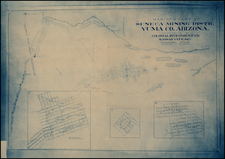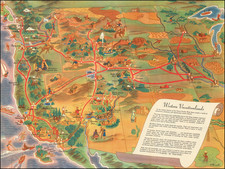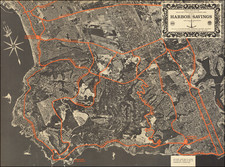Early Oil Drilling in Seal Beach
Rare early promotional pamphlet and map, illustrating the well site and surrounding lands of the Seal Beach Oil Company.
The map is oriented with east at the top, extending from the recent Signal Hill oil fields in the north to the Huntington Beach oil fiels in the south. The Pacific Electric Railroad lines, Sunset Beach and the Bolsa Chica Gun Club lands are also shown, as is the 640 Dutch Shell leaed on Anaheim Bay.
The text notes that the Seal Beach lands are between the fields of Royal Dutch Shell and Signal Hill and Standard Oil in Huntington Beach.
The Seal Beach Oil Company was formed in May 1921. One of the holes drilled by the Seal Beach Oil Company in February 1922 near the highway, came in wet, meaning that the proportion of water to total oil and gas (water cut) was so high that it was not economical to produce the oil or gas. Company activity seems to have been ongoing into at least 1924.
The City of Seal Beach passed an ordinance banning wild cat oil drilling on May 7, 1925. The ban was listed in April 1927.
Seal Beach Oil Field
At the request of the Los Alamitos Land Company, in 1912, Geologist Dr. Ralph Arnold surveyed Rancho Los Alamitos and thought that the area would not be conducive to oil exploration and production.
After the death of the Los Alamitos Land Company’s President, I.W. Hellman, in 1920. Fred H. Bixby, a rancher and co-owner of the Los Alamitos Land Company, was elected to take Hellman’s place as President. Disagreeing with Dr. Arnold’s survey, Bixby began leasing tracts of land to the Royal Dutch Shell Company and Standard Oil in 1921, and later to the Marland Oil Company in 1924.
The first attempts at the discovery of oil began in 1921. Initial prospecting was conducted by Standard Oil Company. The company’s Bixby No. 1 well was spudded on February 26, 1921 and drilled to 5,540 feet without penetrating an oil-bearing formation. The Alamitos No. 1 well was spudded on September 28, 1921 and drilled to a depth of 5,760 feet without encountering significant oil deposits. Other wells were drilled by various entities, such as the Seal Beach Oil Company, H.R. Dabney, Shell Company, Associated Oil Company, and Marland Oil Company, but all proved unviable.
The discovery of commercial production finally came after five and a half years of wildcatting on June 4, 1926. The Marland Oil Company began drilling Bixby No. 2, located on the Synergy Oil Field site, and by August 4th of
the same year the Bixby No. 2 had sent the Seal Beach Oil Field into commercial production, resulting in drilling operations well into the late 20th Century.
Rarity
The pamphlet is unrecorded.











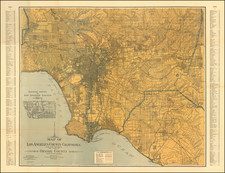
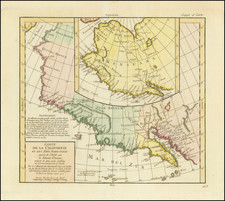
![[ Earthquake Fault Lines ] Reconnaissance Map of the West Side of Sacramento Valley . . . 1920](https://storage.googleapis.com/raremaps/img/small/101680.jpg)
